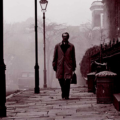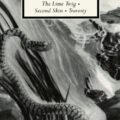Family; or, What It Means to Be a Freak

In Tod Browning’s 1932 film, Freaks, Hans, a sideshow dwarf, falls in love with the beautiful trapeze artist Cleopatra, who marries him for his money and plots to poison him while carrying on an affair with Hercules the strongman. “We accept her. One of us, one of us…” the circus performers chant at Hans’ and Cleopatra’s wedding reception. Cleopatra is accepted into the community of the “freaks” despite being “normal”—but she is ultimately made to conform to freakishness, to become “one of us,” in an act of revenge. When Hans discovers Cleopatra’s betrayal, the sideshow performers attack her, leaving her a deformed, tarred and feathered human-bird: another grotesquerie for the sideshow.
Freaks was unusual for its time—and would still be so today—in that the Browning hired real sideshow performers, dwarves, conjoined twins, amputees, as his actors. The film is an uncomfortable reminder, for a modern audience, of our historical treatment of physical difference and the appropriation and exploitation of bodies that express difference. The same themes of freakishness, conformity, power, and exploitation that the film explores are present in Nicelle Davis’ new novel-in-poems, In the Circus of You.
Freaks haunts Davis’ novel, an unspoken presence, surfacing in the book’s ringmaster, disturbing clowns, contortionists, humanoid birds, hybrid bodies and wild animals. Using these figures, Davis writes about difference, the desire to fit in, and the defiant wish not to. She writes about mimicry and illusion, beauty and violence, and about how loss can make anyone feel freakish.

In the Circus of You
An Illustrated Novel-in-Poems
by Nicelle Davis and Cheryl Gross
Softcover, $14.95
Rose Metal Press, 2015
The theme of not-quite-conforming in In the Circus of You echoes the work’s formal hybridity: billed as an illustrated novel-in-poems, the book is the result of a yearlong collaboration between Davis and illustrator Cheryl Gross. The result is almost epistolary. The poems and illustrations respond to and riff off one another. Or, seen another way, the book is a freak itself—art of conjoined sensibilities, two creators and two artforms living as a single body.
Gross’ black-and-white drawings, with their coarse heavy lines, ragged edges, and crosshatching, provide a visual complement to the rawness of Davis’ writing. There is a punkish sensibility to the images of sword-swallowers, hands morphing into mice, and obese wheel-bound mermaids. Gross’s illustrations are unashamedly direct and defiant. They are pointedly un-beautiful.
The portrayal of beauty is a troubled theme throughout. “Dress / truth in feathers and rhinestones” Davis writes in a poem describing a circus “unicorn”: a grotesquely mutilated goat presented by the ringmaster as a symbol of innocence and wonder.
First circus I ever saw
had such a creature—horn drilled into
the skull of
a goat. I
knew
it was
fake from
the blood circling
the mount. But I chose
to see what the ringmaster told
me. I cried like a blind girl made to see beauty.
Beauty is in the eye of the beholder, but the beholder may choose to blindfold herself. She may allow herself to believe the fable because reality is too painful and sordid. Sometimes we prefer fiction because the truth is so ugly.
A project like this could be given over to dark whimsy, but Davis doesn’t shy away from painful and complicated themes. The dissolution of marriage, and a family, are at the heart of the work. While it is difficult to see In the Circus of You as a novel—it feels more like a collection of interrelated fragments—the story of divorce and motherhood unifies the work. The “freaks” Davis visits over the course of the book—the mermaid woman, conjoined twins, and contortionists—are mere sideshows: the story of divorce and motherhood play out in the center ring.
In “Bought a Pack of Cigarettes Today”, the dissolved marriage is presented in terse statements: “We are / done with each other” and “Tonight is your turn with our family.” The severance of the family is itself freakish: in “Gravity” Davis writes “You’ve called to see if … our son has been split 50/50 by ink and paper cuts.” In a world that still yearns for perfect TV families, the divorcee and broken family are deviant.
Holding it together, keeping up appearances, the image of the saint-like mother is thoroughly deconstructed. Her struggle becomes too difficult when the family falls apart. Davis describes this aptly in “When Practical Things Press Against Me,” a poem in couplets describing a mother cooking for her son. “Carve my breast with a knife and bread it,” she writes. “Have my wings … Take my other breast.” A wholesome chicken dinner or an act of unnatural violence? The metaphor of the self-sacrificing mother moves into the realm of cannibalism as Davis nods to Browning’s Cleopatra, mutilated to resemble a human bird at the end of Freaks.
The violence of this image is striking, but not unique. There is violence throughout In the Circus of You. There is violence towards one’s self and the violence of others. The goat mutilated to unicorn, and the mother who feels she is giving herself away bodily. The jagged lines of Gross’ illustrations echo this violence. You feel like you could cut yourself on their edges. There is also the evidence of domestic violence: “a hole the size of your fist in our bathroom door. My fault, I’m told, for / pushing the hinge towards your movements.” There is the gendered verbal assault as well. “Gifts of a Shape-Shifter” presents a marital fight, where “the word bitch grows teeth. An all-hunger, cannibal name.” Davis summons the word’s literal animal meaning: “I’m not / a bitch, I bark. Teeth nipping your ears.”
The woman becomes animal in her rage and sense of displacement, here and elsewhere in the book. Davis’s single mother is alternately a mad dog and a fox snapping “at chicken thawing in the sink”. She imagines birds and cats flying out of her throat and dreams of litters of mice born in the marital bed. Prophetic messenger pigeons take over the conscious voice of several of her poems, their bones speaking like omens. The fate of Cleopatra, the bird-woman, is never far.
What is unclear is whether this hybridity, this freakishness, is desired or feared. It seems likely that the answer is both—the hybridity of truth.
While the story of familial loss holds the book together, Davis offers frequent and vivid portraits of those deemed “freaks”. Section two of In the Circus of You, “Recruiting Talent for the Appropriation Circus”, is blunt in its treatment of how difference is made a spectacle. The audience is both ashamed and fascinated, ogling the sideshow artists, both desiring their difference and repulsed by it. In the poem “What the Appropriation Circus Teaches Me about Want—or—Sideshow Serpentina: The Last of the Split-Tailed Mermaids,” Davis describes the sexualization and exploitation of difference, the passive female object of desire and the powerful male viewer and consumer:
The poster shows her bare-
breasted. Areola painted
pink on yellow paper, a picture of heat, stage
lights focused on the wet
split of legs, one limb pulled
into the loops of the other.
Nickel crowds line up to see
the boneless woman. […] A man,
taken by her inescapable
need, buys himself fresh
fish off the ice at market.
The sexualized physical difference (the “wet / split of legs”) becomes a consumer good, a unit of exchange in an imbalanced power relationship. The man’s reaction to the fake mermaid—buying fish for dinner out of a displaced sense of desire—however, may not be so different from the young girl weeping at the sight of a fake unicorn. Both man and girl want to believe in something they know to be untrue. They are willing participants in the appropriation circus, both aware of what is at stake and suspending disbelief. As consumers, they are perpetuating violence on the bodies of the powerless—the mutilated goat, the deformed woman—but they do not know how to do otherwise.
As horrifying as the images Davis presents are, they bear little resemblance to the contemporary circus, which is undergoing something of a renaissance right now. The modern version has vocally disassociated itself from the cruelty and exploitation of its past. Gone are the days where dwarves and intersex people had little recourse but the freak show. Animals are treated more kindly or have been removed from the show all together, as in the Cirque du Soleil and other contemporary performance troupes.
The circus has been reinvented for the 21st century, appealing to the young and hip. There are schools were anyone can learn how to fly on the trapeze or tumble with aerial silks. Trendy nightclubs hold circus events for adults, combining the acrobatic and the burlesque. The circus is no longer a seedy family business, but a venue for polished modern artists.
Davis’ work might seem part and parcel of this vogue for the modern circus, but In the Circus of You presents an altogether grittier, more wounded world. Her performers are not actors. They’re real people who ended up in the circus because there was no other place for them. There is an overwhelming realness in both Davis’ writing and Gross’ illustrations. Yes, they are raw, painful, and ugly at times, but they tell an affecting story of loss and what it is to feel like you both are, and are not, one of us.
About Nora Delaney
Nora Delaney is a poet, translator, and critic. She received her PhD from the Editorial Institute of Boston University. Her writing can be found in Literary Imagination, Two Lines Online, Absinthe: New European Writing, Subtropics, Pusteblume, Little Star, Fulcrum, The Arts Fuse, and elsewhere.





